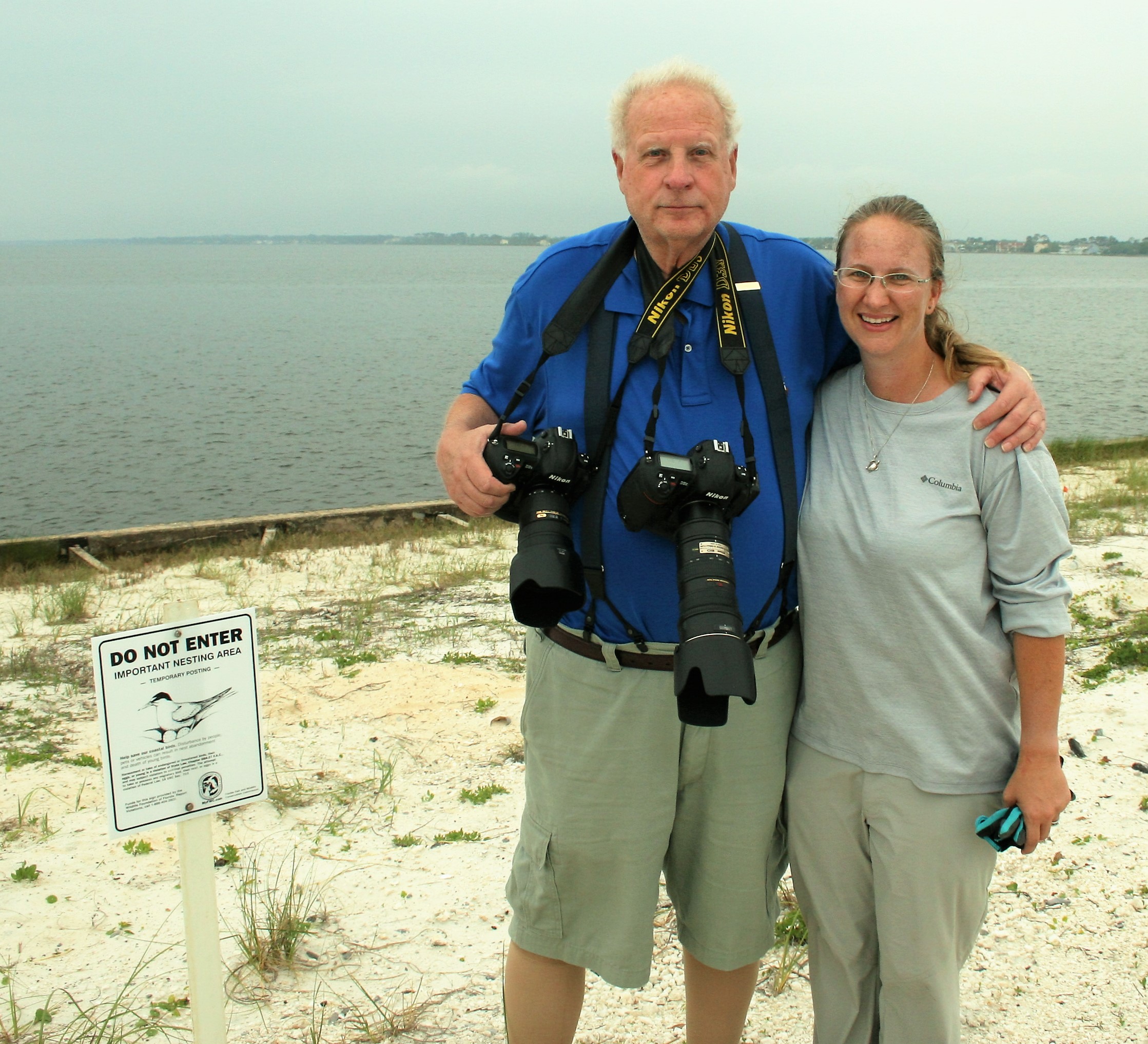
Photo by Romi White
Wilder pictured at the April 27 volunteer event with Audubon Florida Panhandle Shorebird Program Manager Caroline Stahala.
For roughly a dozen years Navarre resident Kenny Wilder, founder of ECT Telecom, has led the charge to protect threatened species of nesting shorebirds on Navarre Beach.
Wilder, also a talented photographer whose work has been featured on Good Morning America, shares his skill at capturing coastal images via websites and social media, often with inspirational Bible scriptures.
But his passion for sharing the beauty of God’s creations doesn’t stop there. He also rallies other volunteers to take action to protect them.
Each spring Wilder works with birding conservationists to take measures to prevent the deaths of least terns and a colony of Black Skimmers who use the area between the bridges on Navarre Beach Causeway to nest.
According to Audubon Florida surveys, the Navarre Beach Causeway nesting site produced 188 least tern and 101 Black Skimmer chicks in 2015.
Audubon staff drove April 14 from Bay County to meet with Wilder and his wife, Dale, to formulate a game plan to erect two-phased fencing during this year’s shorebird nesting season.
Caroline Stahala, Panhandle Shorebird Program Manager, and Emily McKiddy, a rooftop nesting coordinator, worked with Wilder to outline the logistics of constructing the first phase of fencing.
Stahala described Wilder as an “invaluable” asset to preventing bird deaths during nesting season by using his social connections to prompt droves of volunteers into action when needed.
The team, along with nearly two dozen volunteers recruited by Wilder, regrouped April 27 to establish a border along the causeway marking the nesting areas over the course of a couple of hours.
According to Stahala, the first fencing phase simply marked off the area so people will be aware threatened shorebird species are in the area, preparing for nesting season.
Once the birds actually start nesting, a second set of fencing aimed to keep chicks off the roadway will be put up. “We want them to be established first,” Stahala said.
Wilder said in previous years permanent fencing had been used to block off the area. But he said not only did locals and tourists not like it but also birds didn’t nest in the area.
He said they devised a phased approach, which allows the birds to get comfortable with the spot before nesting and doesn’t stop humans from using the area for fishing and other purposes outside nesting season.
Wilder said volunteers return to completely remove the temporary fencing around September at the end of nesting season.
During the season, Stahala and other team members take weekly surveys and other steps to monitor shorebird sites, which sometimes include flat, gravel rooftops due to a lack of undisturbed beach areas.
McKiddy focuses on protecting nests on flat, gravels rooftops, such as at Winn Dixie in Navarre. She meets with building managers to make them aware when nests are spotted and seeks permission to add protective fencing to keep chicks from falling from rooftops or into gutter systems.
Volunteers are welcomed to take part in protective nesting season activities. “They’re the life blood of the program,” said Stahala.
To get involved, contact Stahala via cstahala@audubon.org. You can view a gallery of Wilder’s photographs at http://www.kennywilder.com





































